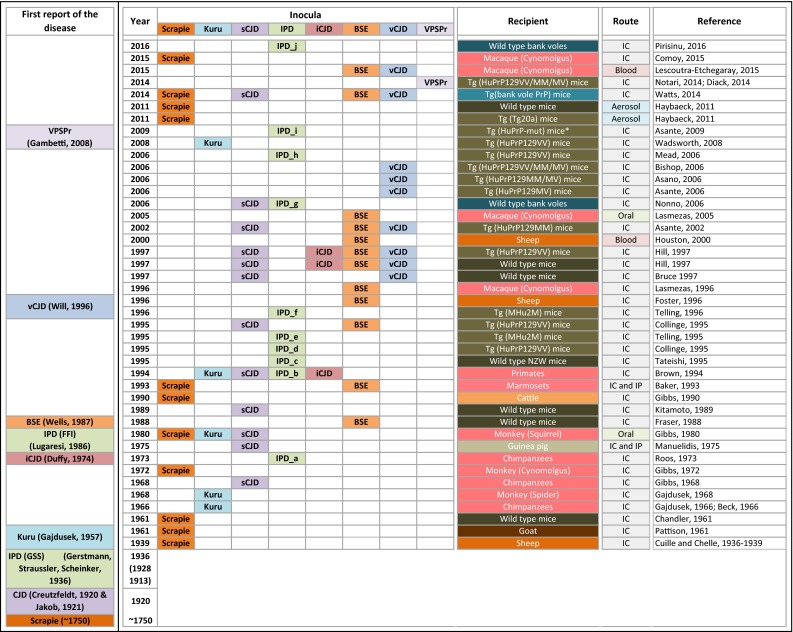Fig. 1.

History of the use of animal models of prion disease. The left column indicates when the diseases were first reported, starting with scrapie in the 18th century and CJD in 1920. The time line (second column) is not strictly chronological, but is aligned with the generation of relevant animal models. The subsequent columns, titled “inocula”, indicate the different forms of prions that were transmitted. The column “recipient” indicates the species and, where appropriate, their genotypes. To the right, the transmission route and the reference. The inocula in the column IPD are complex and are according to the following key: a CJD in patients with family history (specific mutation not known); b E200K, D178N 129V, P102L, 5-OPRI, 7-OPRI, and 8-OPRI; c D178N 129M and 24 basepair deletion mutation on the same PRNP allele; d D178N 129M; e E200K; f D178N 129M; g E200K, V210I; h 6-OPRI; i P102L, A117V, and E200K; j P102L, A117V, and F198S; Tg (HuPrP-mut) mice recipients: *HuPrP-P102L, HuPrP-A117V, and HuPrP-E200K; abbreviations for routes of transmission: IC intracerebral, IP intraperitoneal
